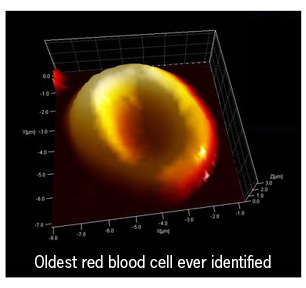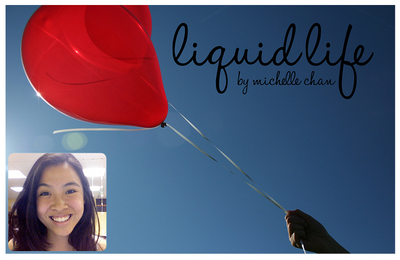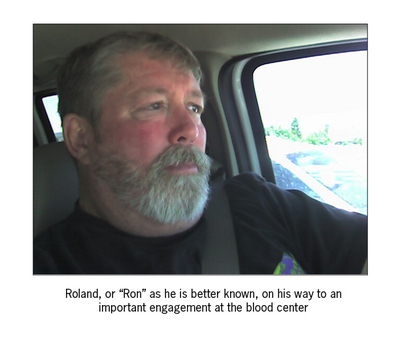May 2012
A Little Extra Giving Goes a Long Way
| Tweet |
By Julie Ruel, Social Media Manager, Stanford Blood Center
Earlier this year, we added a new option to our online store, offering donors a unique way of spending the points they earn through their donations. In addition to the usual thank-you gifts such as apparel, athletic gear, and coupons, donors had the opportunity to donate their points to help support Lucile Packard Children’s Hospital (LPCH) and The Safe Blood Africa Project.
You may have noticed these options no longer appear in our online store. Not surprisingly, the kindhearted spirit of a blood donor doesn’t end when the needle comes out. The overwhelming response in number of point donations had our allotted funds for these programs maxed out within a few months. But these donations have gone a long way.
We’ve been able to provide LPCH with gift cards to be used for special items for patients in long-term isolation. Colette Case, Director of Child and Family Life Services at LPCH (pictured below) happily accepted the cards from us. “Some of our stem cell patients are in isolation for 4-6 (or even more) months and it is quite a challenge to make sure they have the crafts, games and other supplies they need to reduce the effects of this long term isolation on their development. We’re so thankful for the continued support of Stanford Blood Center and its generous donors.”
In addition, the point donations have gone to work for The Safe Blood Africa Project. The organization, based out of California, is dedicated to improving transfusion medicine in Nigeria by providing such items as lab equipment, vehicles for blood drives, and comfortable donor beds. The point donations from our blood donors have allowed us to contribute to the Project, ultimately supporting their goal of providing a safe blood supply in Nigeria.
We hope to offer a similar program for our blood donors in 2013 – please stay tuned!
5,300 Year Old RBCs
| Tweet |
By Billie Rubin, Hemoglobin’s Catabolic Cousin, reporting from the labs of Stanford Blood Center
In 1991, a couple hiking through the Italian Alps noticed something curious buried in the ice. What was assumed to have been the body of a fallen hiker, probably from a few years back, turned out to be “a 20th century archaeological sensation”. The remains were 5300 years old from a man who became known as Oetzi, a.k.a. The Iceman.
LiveScience reports that the Iceman “was so well preserved that scientists could estimate his age (about 45), his health and even his last meals (red deer meat with herb bread [but unfortunately for him, no Chianti]). His probable cause of death was thought to be an arrow wound to the shoulder that sliced an artery.”
Scientists studying Oetzi recently made an astonishing discovery. They were able to confirm that the donut-shaped structures found around the wound where the Iceman was fatally shot were red blood cells. The oldest human red blood cells ever to be studied.
Incidentally, his full genome was decoded a few months back. “It reveals that he had brown eyes, "O" blood type, and was predisposed to heart disease.” Oh, and he was lactose intolerant (5,300 years old with digestive problems, of course)...
Liquid Life
| Tweet |
Michelle Chan is a student at Mountain View High School and Freestyle Academy of Communication Arts & Technology. The following is an excerpt from her book, Liquid Life, which she wrote for a research project at Freestyle Academy.
For as long as I can remember, my dad would come home every couple of months with a pint of ice cream and a bright red bandage around his arm. I was always happy to see the ice cream, as well as my dad, of course. But it wasn't until I was older that I found out why he got the ice cream. As both he and Baskin-Robbins like to call it, it was "A Pint for A Pint". For every pint of blood that my dad donated, he would receive a Baskin Robbins coupon for a pint of ice cream in return.
When we were first asked to choose a topic for the book, I wasn't sure at all what I was going to do. But I finally decided to research the Stanford Blood Center. This topic was introduced by my friend, Paige Topole, who is a volunteer there. During this time I read a book titled Blood by Douglas Starr. The 496-page book was intimidating at first, but I found it to be so full of fascinating information that I was able to use for my book.
I ultimately decided I would document the Stanford Blood Center because I think that its value to the community is often overlooked unless you're a patient receiving blood. Even though my dad is a regular blood donor, I didn't know just how much his donation impacts the community until after I researched it. After a couple of trips to the Mountain View blood center I got the opportunity to shadow Paige (pictured below, donating blood) as she went through the donation process and I learned much about how the center functions.
In a few words to describe my experience there are that the nurses are very nice and it has very delicious cookies. Through interviews with both donors and staff members at the blood center, I was able to find out and appreciate all that it offers to the community.
* * * * * * * * * * * *
Imagine that you were just in a head-on collision and you need surgery right away or you will die. That was the case for seven-year-old Brennah Payne who was left with massive internal abdominal damage, a bowel severed in five places, and a broken spine. Brennah was rushed to Lucile Packard Children's Hospital in Palo Alto for immediate treatment. Over the course of six months, she endured surgery after surgery - 22 procedures - and many transfusions of plasma and red blood cells to repair the damage done by the crash. Without the many, many units of blood, her chances of survival would have been slim. Brennah, now fourteen-years-old, is doing just fine and encourages people everywhere to donate blood. Her mother, Heather, knows just how important blood donors are. "I've been on the other side," she says. "Sometimes you think you're only one person and that one unit of blood won't make a difference, but drop by drop, it all makes a difference. We're so grateful".
Blood donation isn't anything new. In fact, it started back in the 1600s when one of the first recorded donations of blood took place. Soon, hospitals everywhere started utilizing the human resource of blood. A few centuries later, medical scientist Bernard Fantus found that blood was able to be stored. He called it a "blood bank" and that name stuck. The creation of blood banks came just in time as months later World War II occurred. During the war many makeshift blood donation centers were put into operation to support the number of people giving blood. The Red Cross hired a publicity staff to encourage people to donate blood for the war effort. One poster showed a wounded soldier with the caption, "He gave his blood. Will you give yours?" It rallied the people on the home front to do what they could to help the war effort. Douglas Starr, author of Blood, states "…it became clear that they (blood that was transferred to the soldiers) gave soldiers a psychological boost – not only because they increased the men's chances of survival, but because those fighting knew the enemy had virtually none. Even the cosmetic effects of blood proved uplifting: Soldiers who were used to seeing their wounded comrades look death-white, even with plasma, now beheld a rosier glow". Because people had donated blood, the soldiers felt more compelled to fight on. They knew that blood was a powerful weapon that they could use in their advantage. Blood had such a powerful effect on the soldiers and was so very precious.
Albert Einstein said: "The value of a man resides in what he gives and not in what he is capable of receiving." He is right. Giving to others is a good thing to do. During World War II, people from all across America gave their blood to do their part. Even today, blood is still needed. Roughly five million people need blood each year for surgeries or due to illnesses. Unfortunately, only five percent of people who can donate blood actually do. Approximately every two seconds, someone needs blood. That means dozens of people have needed a transfusion since you started to read this article. Blood banks are always in danger of not having enough. Two contributing factors are that donated blood has an expiration date and patients have to receive their own specific blood type. Donating blood is so important and many do it because they want to help others.
So, why should you donate blood? Of course, the most conventional answer is because it saves lives. But if you dig deeper you will see that donating blood isn't just about saving lives, it's about taking part in your community and giving back. It's about the joy you receive from giving. Donating blood has been a big part of the United States' history and there's no reason to stop now.
Click here to see Michelle's complete research project.
#WhyIGiveBlood: It Supports the V.A. Hospital
| Tweet |
By Roland Keffer, Stanford Blood Center donor
I began giving blood with the Red Cross in 1960. My boss had cancer and the whole company would go down and donate blood in his name. He survived a year or so, and after he died, I still continued to give blood.
I was drafted into the service in 1966 but being a member of the Armed Forces, they recommended that we not give blood. So after my discharge in 1968, I began giving again, but not yet on a regular basis.
In 1997, I was diagnosed with prostate cancer. With that diagnosis, one of the many things that came to mind was that I’d no longer be able to donate blood. Then, seven years later, I was at a motorcycle rally put on by the Hells Angels of Palo Alto and there happened to be a blood drive taking place. I spoke with one of the nurses and told her I could not donate because of being diagnosed with cancer. She informed me that because I had been cancer-free for a period of time, I was eligible to begin giving blood again. So I jumped at the chance!
Being a disabled veteran, I decided to start donating with Stanford Blood Center (SBC) because of their affiliation with the VA Hospital in Palo Alto (where I was a frequent patient). Most of their doctors were from Stanford, which I appreciated and it made me feel better about giving back.
Upon my first donation with SBC, one of the nurses asked if I would consider giving platelets and I said, “Sure!”. I have been giving both whole blood and platelets ever since.
We are so lucky to have this resource that’s in such high demand that we can donate for those in need. I hope you will consider giving blood and, if eligible, platelets. It saves lives.
A Blossoming Community Blood Drive
| Tweet |
By Monica Doleshel-Aguirre, Blood Drive Account Manager, Stanford Blood Center
Midge Zylker had a goal to start a community blood drive in her Rose Garden neighborhood to make it convenient for the residents to donate blood on a regular basis. Being a realtor and nurse by profession, she used her network connections by contacting Fred and Debbie Zanotto, owners of Zanotto’s Market in San Jose’s beautiful Rose Garden. Midge, pictured above with her husband, Randy, shared with them her goal, and asked them to allow Stanford Blood Center to park a bloodmobile in front of their store two or three times a year to host community blood drives. Fred and Debbie, being friendly local family store owners, and very conscientious about the needs in their community, graciously agreed and the Rose Garden community blood drive was born.
Starting with three blood drives a year in 2006, the drive soon proved to be a wonderful service to the community. Midge worked hard canvassing the neighborhood and local businesses by providing them with posters about upcoming blood drives and advertising in the local Rose Garden newspaper. Between her efforts and the continuous support from Zanotto’s Market, the need to have the drives more frequently soon grew. In April 2008, Stanford Blood Center increased the Rose Garden community drives to four times a year. Since these drives started in 2006, we have collected over 620 units, and welcomed over 100 first-time blood donors.
When Fred and Debbie opened their new store in Willow Glen approximately a year ago, he asked us if we would be interested in running blood drives at his new location. We of course jumped at the opportunity and now run three blood drives annually at Zanotto’s Market on Foxworthy Avenue in the Willow Glen area of San Jose.
Midge’s husband, Randy, and Fred and Debbie Zanotto are regular donors at these drives. They truly understand the need for blood and are making sure they do their part to help meet the needs of the patients in our local hospitals.
If you're interested in hosting a blood drive with Stanford Blood Center, please contact Karen Hendryk at karenhendryk@stanford.edu.
Big Numbers in Our Blood
| Tweet |
By Billie Rubin, Hemoglobin’s Catabolic Cousin, reporting from the labs of Stanford Blood Center
Each of the approximately 30 trillion red blood cells (RBCs) in our bodies (30,000,000,000,000) has about 280 million hemoglobin (Hgb) molecules in it. And each hemoglobin molecule can transport four oxygen molecules from the lungs to any other cell in the body (including your brain, which is using that oxygen to read this right now).
So, what does this mean? It means that your blood is like a little tank of oxygen gas containing:
4 oxygen molecules x 280,000,000 Hgb molecules x 30,000,000,000,000 RBCs = a lot of molecules of oxygen that your tiny but mighty RBCs can carry!








